Civil Liberties, Gaza, genocide, Prison Industry, Racist Police Violence, Targeting Muslims, U.S. Militarism, Violations of U.S. and International Law, War Resister
Podcast: Play in new window | Download

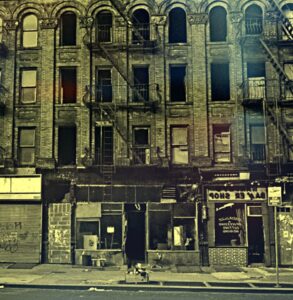
I Dare Say: A Gerald Horne Reader
Angela Davis once stated “radical simply means grasping things at the root.” This makes understanding possible. What are the roots of our present dilemma? Where did capitalism come from? And what accounts for its great success? Where did racism come from? When was it implanted? Why are alternatives to the capitalist Democratic and Republican parties so feeble?
What did Malcolm X really stand for and what did he try to accomplish before he was assassinated at age 39, the same age that his contemporary Martin Luther King was assassinated five years later? How does this contribute to the weakness of our movement?
This weakness can be traced back most immediately to the anti-Communist witchhunt of the 1940s and 1950s and the destruction of the left-wing; of our once powerful trade unions beginning in 1947.
The danger that Malcolm X. presented to the powers that be are best understood by his internationalism, his reaching out to leaders in Africa, his desire to go to the United Nations to mobilize against American racism.
Today’s political activists are drawn to the works of historians to appreciate where we are at, how we got here, and what to do next.
Guest – Gerald Horne has written about these profound events. His reader I Dare Say has just been published by OR books. Cornell West called Gerald Horne is “one of the great historians of our time.“ Horne approaches his study of history as a politically engaged scholar with an insightful and necessary partisan stance. He graduated from both the University of California law school and Columbia University where he got his PhD in history. Horne has been active as a leader of the National Conference of Black Lawyers and is the author of 40 books as far reaching as the origins of capitalism, racism, settler colonialism, boxing and jazz. He is currently a chaired professor of African-American history at the University of Houston.
—-
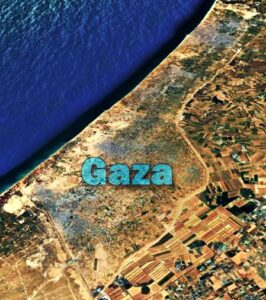
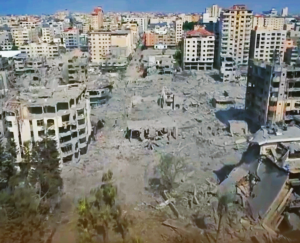
Attorney Michael Deutsch on Repression of the Pro-Palestinian Movement
Historically, when the people of our nation rise up in massive opposition to policies and actions undertaken by their government that are deemed essential to its foreign or domestic policies, various governmental agencies invariably begin the process of trying to shut down or seriously weaken the peoples’ movements against those policies and actions. That’s what happened in the 1960’s and early ‘70’s, during the movement against the U.S. war in Vietnam. In the ‘60’s when the movement for civil rights was so active in our nation. Or more recently in response to the movement on behalf of immigrants’ rights. And so it is not surprising that the pro-Palestinian movement in the United States, which in the wake of how Israel is conducting its war in Gaza, has exponentially increased in size and in public view, would immediately become the focus of renewed governmental, as well as private, repression in America. Colleges and universities shut down groups like Students for Justice in Palestine and Jewish Voice for Peace; college presidents were called to testify before Congress about what they were, or were not, doing to combat alleged increases in anti-Semitism on their campuses; the U.S. House of Representatives initiated, and continues, an investigation of the pro-Palestinian movement; private employers have withdrawn job offers to students and others who joined the anti-Israel protests; and authors and speakers deemed too supportive of the Palestinian cause continue to be disinvited or banned from speaking at public forums.
Secrets And Lies: The Persecution Of Muhammad Salah
Often, governmental efforts to intimidate or undermine these peace and social justice movements include actions that are not visible to the general public. Secret actions. Actions such as sending undercover agents into the targeted protest groups in order to disrupt the group. Electronic spying on the groups and group leaders escalates. And, as the case with the movement now protesting Israel’s actions in its war in Gaza, a war backed by the United States both politically and militarily, various U.S. policing agencies are now consulting with, visiting with, and working in concert with governmental agencies in Israel.
Guest – Michael Deutsch, a lawyer with the famed human and civil rights People’s Law Office in Chicago, Illinois. Michael has also served as the Legal Director for the Center for Constitutional Rights in New York City. In the course of his career, he has been a criminal defense lawyer for the rebelling prisoners at Attica, and later was a coordinator in the Attica civil lawsuit where, after two decades of litigation there was a settlement of 12 million dollars in damages. Mr. Deutsch has also represented Black Panther Party members, Puerto Rican Nationalist prisoners in the 1950’s, who won an unconditional sentence commutation from President Carter in 1979; and more recently Michael represented Rasmea Odeh, the Deputy Director of the Arab-American Action Network, a former Palestinian prisoner and torture survivor.

——————————————-
Gaza, genocide, Human Rights, Targeting Muslims, Violations of U.S. and International Law, War Resister
Podcast: Play in new window | Download


SCOTUS Oral Arguments Social Media Platforms
Earlier this month, the Supreme Court heard oral arguments about two different state laws that would regulate how large tech companies control what content can appear on their sites. The laws would compel companies to carry all users’ viewpoints and would preclude them from de-platforming political candidates. The Florida law at issue in Moody v. NetChoice and its Texas counterpart in NetChoice v. Paxton represent challenges by tech lobbying groups, NetChoice and the Computer and Communications Information Association. The plaintiffs claim the laws violate their First Amendment rights to make editorial choices about what content to permit or prohibit.
Most members of the Supreme Court seemed to indicate that, in some contexts, the Florida and Texas laws likely violate the First Amendment rights of the social media firms. They also expressed concern that blocking the laws entirely might go too far.
Republican legislators in the two states passed the laws aimed at what they say are efforts to stifle conservative voices on platforms like Facebook and YouTube. In part, the laws came about after platforms banned Donald Trump for violating their rules against inciting violence in his posts related to the Jan. 6, 2021 Capitol insurrection.
The plaintiffs assert that it will be virtually impossible for platforms to monitor and prevent hate speech, pro-terrorism advocacy and content that could harm children.
Potentially pivotal members of the court included conservative Amy Coney Barrett and her liberal counterpart Ketanji Brown Jackson. They said the correct course for the court was murky because large social media platforms play many different roles. While the platforms primarily curate speech crafted by users and enjoy broad First Amendment protection for doing so, the sites also provide services, like private messaging, that don’t involve much, if any, editorial supervision by the sites. Barrett and Jackson suggested that such services are similar to telephone or internet providers and can be subject to more government regulation.
Guest – Attorney and Professor Zachary Wolfe at George Washington University in Washington D.C.
—-


Robin Anderson on US-Israel Media Genocide Complicity
International humanitarian aid organizations have been documenting and warning that Israel was committing crimes of war after bombing Gaza after the October 7, 2023 Hamas attacks. Yet major media outlets and social media platforms have consistently ignored their on-the-ground reports.
As Israel’s attacks escalated into acts of genocide, corporate media coverage has largely framed such violence as defensive and justified. Glaringly absent has been reporting on Israel’s long-established use of violence and deprivation against Palestinians in Gaza, the West Back and Occupied East Jerusalem. As we’ve been covering on Law and Disorder, 50 years after Israel occupied the West Bank and Gaza Strip, it has systematically repressed and abused the rights of the Palestinian population. It is long recognized by most state and international bodies have long recognized that Israeli settlements are illegal under international law. Israeli violence has long been aggressive, a fact well documented but rarely discussed is establishment media.
What factors have contributed to Israel avoiding moral and legal culpability for its acts of genocide? As it turns out, there are many, from Israel employing propaganda, falsifying evidence, to the censorship and silencing of US journalists and commentators as well as repression of dissident voices online and off. And powerful Israeli lobbying forces have effectively silenced any criticism of Israel.
Guest – Robin Andersen is Professor Emerita of Media Studies at Fordham University. She writes media criticism for Fairness and Accuracy in Reporting (FAIR), and other outlets, and works with Project Censored as a contributor to the annual State of the Free Press book. Her work 0n the current Israeli bombing of Gaza has appeared in numerous publications. She is a guest columnist for Al Jazeera Arabic. Her book, A Century of Media, A Century of War, won the Alpha Sigma Nu book award in 2007. Robin’s Substack Page
Hosted by attorneys Michael Smith and Heidi Boghosian

——————————–
Civil Liberties, Civil Rights, Gaza, genocide, Human Rights, Supreme Court, Targeting Muslims, War Resister
Podcast: Play in new window | Download

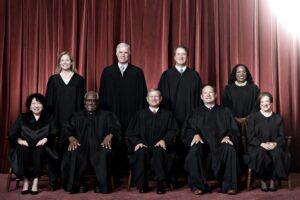
Legal Analysis Of Recent Supreme Court Decisions
The U.S. Supreme Court, securely under the control of a Super Majority of 6 conservative Republican justices, three of whom were appointed by Donald Trump, continues to play a decisive role in undermining our constitutional democracy. This ominous trend continues based on three recent key cases, which we’ll be talking about today.
In one, the Court on March 4 rejected a lower court ruling that Trump was ineligible to run for president; in April the court will hear oral arguments on Trump’s claim of absolute immunity from criminal liability; and recently the Justices heard argument over whether social media sites had a right to ban Trump and others under their content moderation standards.
All of these cases arise from the insurrection on Jan. 6, 2021, when a mob of thousands stormed the US Capitol to prevent Joe Biden from being certified as President. That day, and for many months before and after, Donald Trump attempted to interfere with the constitutionally mandated process for the election of the President of the United States. Hanging in the balance of these three cases are some of the most momentous issues facing our democracy.
Guest – Stephen Rohde is a noted constitutional scholar and activist. He is the past Chair of the ACLU Foundation of Southern California; one of the founders and current Chair of Interfaith Communities United for Justice and Peace; and the author of American Words of Freedom and of Freedom of Assembly. Steve Rohde is also a regular contributor to the Los Angeles Review of Books, and to TruthDig, and a leader in the national campaign to free the imprisoned investigative journalist, Julian Assange.
—-


The Right To Boycott Israel
The First Amendment gives citizens the right to boycott, as well as the right to free speech and assembly and the separation of church and state. The right to boycott is under attack by right wing anti-democratic forces. Anti-boycott bills have been passed in 37 states so far. The main organization behind canceling our constitutional right to boycott Israel for its horrific crimes against Palestinians is the American Legislative Exchange Committee (ALEC). Its a well-funded right wing outfit with considerable power.
Today we speak with leading Palestine solidarity activist Felice Gelman. She helped produce and direct the five minute video called the Right to Boycott. It is a strategic tactic to oppose Israeli crimes against Palestinians.
The boycott started with the Boston Tea Party. The Montgomery Bus Boycott set off the civil rights movement in the south. The Grape Boycott supported Cesar Chavez and the farmworkers in California. The necessity of pushing back against Israel’s genocidal practices has never been more evident.
Guest – Felice Gelman is a coordinator of the Freedom2Boycott NYS Coalition, which has worked for a decade to defeat legislation penalizing boycotts in New York State and recently released a short film The Right to Boycott. She is a board member of the Friends of the Jenin Freedom Theatre, supporting The Freedom Theatre in the West Bank of Occupied Palestine. She was the co-producer of the first full length documentary filmed and directed by Palestinian filmmakers in Gaza, Where Should the Birds Fly?
Hosted by attorneys Michael Smith and Maria Hall

——————————
Civil Liberties, Civil Rights, Gaza, genocide, Human Rights, Targeting Muslims, U.S. Militarism, Violations of U.S. and International Law, War Resister
Podcast: Play in new window | Download

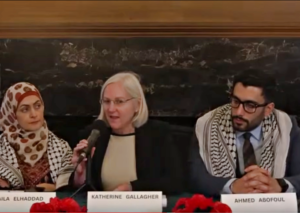
Unflagging Support For The Military Siege Against Palestinians In Gaza
Several months ago, various Palestinian human rights groups and individuals in Gaza and in the U.S., filed a lawsuit in a U.S. federal court, against President Biden, Secretary of State Blinken, and Secretary of Defense Austin, for their failure to prevent, and their complicity in, the Israeli government’s unfolding genocide against them, their families, and the 2.2 million Palestinians living in Gaza. They were represented by the attorneys at the famed Center for Constitutional Rights in New York City.
After a hearing that included testimony from seven Palestinian plaintiffs and witnesses as to the scale of destruction in Gaza and its impact on them and their families, the court found that Israel’s assault and siege on the Palestinian people in Gaza did, “plausibly” constitute genocide, and the court “implored” the Biden Administration to examine its “unflagging support” for Israel. This constituted a profoundly important finding. But the court nevertheless dismissed the case on the grounds that it lacked jurisdiction over the administration’s conduct of foreign affairs.
What was the testimony of the plaintiffs in this case? What were the legal arguments put forth by their attorneys? Why did the court rule as it did? And what is the significance of the judge’s finding that it was “plausible” that genocide was, indeed, taking place in Gaza and its urging of the Biden Administration to examine what the judge termed, its “unflagging support” for Israel in its war on the Palestinian people? CCR Case
Guest – Attorney Katherine Gallagher is a Senior Staff Attorney at the Center for Constitutional Rights . Her areas of legal expertise include matters of torture, war crimes and militarism. Among her many major cases is the case titled, Situation of Afghanistan at the International Criminal Court; and the case titled, Survivors Network of those Abused by Priests-v-Vatican. Prior to her work at the CCR, she worked at the United Nations International Criminal Tribunal for the former Yugoslavia. She is a visiting professor of law at the City University of New York (CUNY) School of Law.
—-
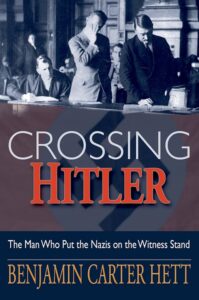
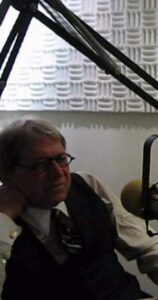
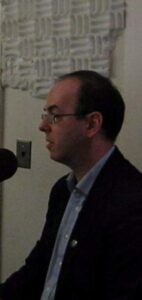
2024 Could Be The Year America Fends Off Dictatorship Or Invites It In
Some years ago, Michael Ratner, the president of the Center For Constitutional Rights and a co-founder of Law And Disorder interviewed our returning guest attorney Benjamin Carter Hett. Hett is a historian, a professor at Hunter College and a lawyer. He wrote a stellar biography of the great German leftist attorney Hans Litten, who cross-examined Hitler, almost stopping him from coming to power by exposing Hitler’s hypocrisy on using violence.
As Michael wrote about professor Hett’s book “it brings to life the period preceding the takeover of Germany by the Nazis. Litten’s cross examination of Hitler went to the heart of the Nazis attempt to achieve power through violence.” Trump has promised to do the same should he get elected. Professor Hett recently wrote about this in an opinion piece in the Los Angeles Times. In an interview with Fox News host Sean Hannity Trump said he wanted to be a dictator “on the first day” of his new administration.
It has been reported that Trump would invoke the Insurrection Act which would allow him to deploy troops to crush protests, arrest dissidents, and shut down oppositional media. Trump is a fascist. He’s not an advocate of the rule of law or of democracy. He boasts about using violence. In the divorce papers his first wife Ivana Trump filed against him she alleged that he kept a book of Hitler’s speeches at his bed table.
Like Hitler, Trump appeals to his base and their desire for “retribution.” Trump said “we pledge to you that we will root out the Communist and radical left thugs that live like vermin within the confines of our country.” Hitler’s racism was shown by his antisemitism, Trump’s by his hatred of immigrants who he says, echoing Hitler, “will poison” American blood.
Guest – Benjamin Carter Hett is a former trial lawyer. He is now a professor of history at Hunter College and the author of several books, including Crossing Hitler: The Man Who Put The Nazis On The Witness Stand. Most recently he has written an opinion piece in the Los Angeles Times titled 2024 Could Be The Year America Fends Off Dictatorship Or Invites It In.
Hosted by Attorneys Michael Smith and Jim Lafferty

————————————–
Gaza, genocide, Targeting Muslims, U.S. Militarism, Violations of U.S. and International Law, War Resister
Podcast: Play in new window | Download
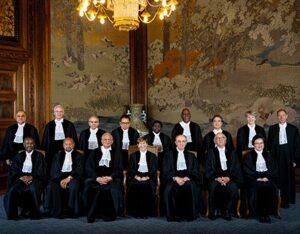

World Court: South Africa Presents Plausible Case That Israel Committed Genocide
On January 26, the International Court of Justice (ICJ, or World Court) handed down a historic, near unanimous ruling in South Africa’s case against Israel for its genocide against the Palestinians in Gaza. At least 26,422 Palestinians have been killed and 65,087 injured by the Israeli Occupying Forces since Hamas’ October 7 attacks. More than 85% of the Palestinians in Gaza have been displaced.
The World Court concluded that South Africa presented a “plausible” case that Israel is committing genocide in Gaza. The court held that the right of the Palestinians to be free from genocidal acts, and South Africa’s right (as a party to the Genocide Convention) to ensure Israel’s compliance with the convention, could be protected by six provisional measures (an injunction), which the court ordered Israel to take.
South Africa’s ministry of foreign affairs described the court’s decision as “a decisive victory for the international rule of law and a significant milestone in the search for justice for the Palestinian people.” The Lawyers for Palestinian Human Rights called the ICJ’s decision “a much-needed light in the darkness,” adding, “It is a historic day for clearly recognizing the fundamental human rights of Palestinians, including their fundamental right to life, and an important vindication of the vital resort to law to uphold fundamental rights.”
Richard Falk, former UN Special Rapporteur on Human Rights in the Occupied Palestinian Territory, said the ICJ’s ruling “marks the greatest moment in the history of the [court]” because “it strengthens the claims of international law to be respected by all sovereign states?—?not just some.” This is particularly significant in light of the recent ruling here in the United States in which the federal district court on January 31 dismissed a lawsuit against Joe Biden, Antony Blinken and Lloyd Austin for their failure to prevent genocide and complicity in genocide by Israel.
Guest – Marjorie Cohn is Dean of the People’s Academy of International Law and a member of the Bureau of the International Association of Democratic Lawyers. Marjorie is also professor of law emerita at Thomas Jefferson School of Law and former president of the National Lawyers Guild. She has written several articles about Israel’s genocidal campaign in Gaza for Truthout.
—-


Judge Dismisses Genocide Case On Behalf Of Palestinian Human Rights Groups
On January 26, just hours after the International Court of Justice found a plausible case that Israel is committing genocide in Gaza, a historic 4-1/2 hour hearing took place in a federal courtroom in Oakland, California. Palestinians who are suing President Joe Biden, Secretary of State Antony Blinken and Defense Secretary Lloyd Austin for failure to prevent genocide and complicity in genocide testified before district court Judge Jeffrey White in a live-streamed session. 1,000 people watched the hearing via Zoom. There were also hundreds of people outside the courthouse during the hearing, standing in solidarity with the Palestinian plaintiffs.
The Center for Constitutional Rights (CCR) filed the lawsuit on behalf of Palestinian human rights organizations Defense for Children International – Palestine and Al-Haq, three Palestinian individuals who live in Gaza, and five Palestinian Americans who have family in Gaza.
The plaintiffs petitioned U.S. District Court Judge Jeffrey White to declare that the United States has violated international law and to issue a preliminary injunction to immediately force Biden, Blinken and Austin to stop providing additional money, weapons, and military and diplomatic support to Israel for its genocide in Gaza.
The defendants have asked Congress to appropriate $14.1 billion in military assistance to Israel — in addition to the $3.8 billion the U.S. already provides to Israel each year. Blinken authorized a $320 million transfer of military equipment to an Israeli manufacturer of precision bomb kits.
On January 31, Judge White dismissed the case because it involved a “political question” which is reserved to the executive and legislative branches. He wrote that “the ongoing military siege in Gaza is intended to eradicate a whole people and therefore plausibly falls within the international prohibition against genocide.” But he concluded this case was a “rare” instance where “the preferred outcome is inaccessible to the court.” He also wrote that the “Court implores Defendants to examine the results of their unflagging support of the military siege against the Palestinians in Gaza.”
Guest – Maria LaHood, one of the attorneys who presented the case for the Palestinian plaintiffs, Maria is Deputy Legal Director at CCR, with expertise in constitutional rights and international human rights. Maria works closely with Palestine Legal to support students and others whose speech is being suppressed for their Palestine advocacy around the country. She graduated from the University of Michigan Law School and was named a 2010 Public Justice Trial Lawyer of the Year Finalist.
Hosted by attorneys Heidi Boghosian, Marjorie Cohn and Julie Hurwitz

———————————–
Climate Change, Gaza, genocide, Targeting Muslims
Podcast: Play in new window | Download


Israel’s War As A Catalyst For World War
One issue flowing from the Israeli-Palestinian war, at first pretty much ignored, is the danger of the war widening. And as Israel’s war in Gaza drags on, with no end yet in sight, the threat of a much wider war grows stronger. Already the war has resulted in military action in Syria and Iraq, by forces loyal to Iran; U.S. military facilities have been targeted in Iraq by Iranian backed forces; the United States and Great Britain are now regularly bombing Houthi military installations in response to the Houthis militarily disrupting the free flow of shipping in the Gulf region, on behalf of their support for Palestine; and, there are now daily clashes between Hezbollah in Lebanon, and Israel, across their shared border.
So far, the adversaries have been careful to not go beyond an unspoken, but generally recognized “tipping point,” so as not to bring about open nation-on-nation warfare throughout the region. But a “slippery slope” has now been created that many fear could bring about what would amount to a “world war”, even if confined only to that part of the world. And if that happens, who knows how many other nations in the Middle East would end up drawn into such a wider war.
Guest – Richard Becker is the Western Regional Coordinator of the “Act Now to Stop War and End Racism” coalition, or ANSWER. He is the author of the highly praised book, Palestine, Israel, and the U.S. Empire, published in 2013, with an up-dated edition of the book about to be released, as well. He is also the author of the book entitled, The Myth of Democracy and the Rule of the Banks. Richard Becker is also a national leader in the Party for Socialism and Liberation.
—-


Climate Change And Legal Analysis
While it has been all too slowly, the reality of climate change and what it means for life on our planet, for human lives and the lives of the multitude of other life forms we share this planet with, has become clearer to all who’ve not buried their heads in the sand and closed their eyes and minds to this deadly reality.
For a few decades now we humans have been paying more and more attention to the issue, and have actually instituted some measures aimed at holding climate change in check, but so far with pitifully little effect. In fact, despite these more recent efforts, those greenhouse gases just keep reaching for the sky in greater and greater amounts every year. Is it hopeless? That is, are we humans hopelessly unwilling and unable to do what the science on the matter makes clear must be done if we are not to find ourselves, rather soon, on our way to extinction? Are there, in fact, things we could and should be doing that would actually work?
Guest – Professor Eleanor Stein is a climate change, environmental justice and human rights activist and advocate. She teaches climate change and human rights at the State University of New York, at Albany, and has just recorded a Continuing Legal Education session on this subject for the CUNY Law School. In addition, she facilitates international forums on climate change and energy. And for years, Professor Stein was an Administrative Law Judge at the NY state agency that regulates the energy industry. She guided state policy on recovery from Superstorm Sandy ten years ago. In this regard, her work centered on mediating processes to bring solar and wind energy to the state at scale, at speed, and with justice.
Hosted by attorneys Jim Lafferty and Maria Hall

——————————–
























